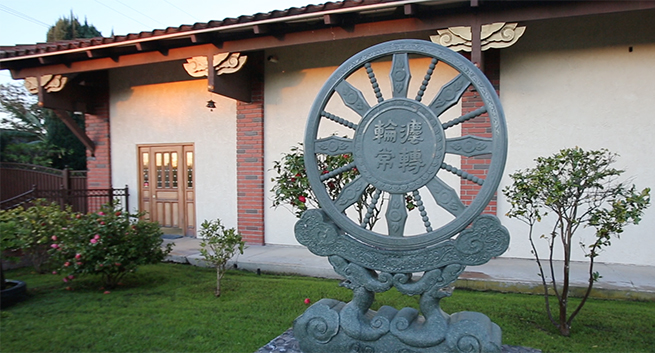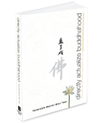Homage in all Ten Directions…

Homage in all Ten Directions, I supplicate to the Three Jewels with reverence and humbly implore the celestial guardians. This monk as an ordinary being has yet to complete my own task, and dare not intercede for others. Nonetheless during this waning period of the Dharma, I am stepping forward to share my understanding with great trepidation and penitence, having neither realization nor attainment. The great spirit shall attest that my intention of offering Seven Verses For A Sangha is not for personal profit and fame. I prostrate and supplicate that should this writing manage to spread and contribute through a few words or phrases to the spiritual advancement of beings, that all merits accrued shall be dedicated to the Dharma Realm, where all beings may partake in the realization of their Full Awakening. I further repent all faults in misleading beings due to confusion arising from my words and their meaning, and may the Buddha receives, guides, and bestows upon us a measure of wisdom that is within our capacity to fathom. May the Three Jewels and the celestial guardians descend upon us with compassion and loving-kindness, and bestow us with blessings and confirmation. With most earnest devotion and tears of gratitude, once again I prostrate and supplicate.
Seven Verses For a Sangha
1. Entering the Sangha, one severs all evil, which includes greed, anger, and ignorance in order to cease all vexation.
2. Following the Sangha, find a good role model and choose wisely who to follow in order to improve yourself with a mind that is calm without craving.
3. Non-differentiating in the Sangha, without distinction between self and others, the mind remains at ease.
4. Surpassing the Sangha, one ends suffering and breaks through all habits, ego, and attachments by attaining no mind, no form, and no attachments.
5. Leading the Sangha, after attaining deep enlightenment one utilizes wisdom and skillful means for the benefit of others.
6. Stabilizing the Sangha, calmly abiding in the emptiness of the primordial nature, one is adaptable in all encounters and opportunities.
7. Perfecting the Sangha, the merit of complete fulfillment that is attained forms Buddha’s magnificent body.
Entering the Sangha, one severs all evil, which includes greed, anger, and ignorance in order to cease all vexation. Entering the Sangha means an assembly of wisdom and compassion, an assembly of those practicing the equal abiding of samadhi and wisdom, and an assembly in accord with the non-duality of essence and form. In the waning era of Dharma, practitioners lack diligence and prefer individual activities such as leisurely travels that waste precious time but are regarded a care-free and pure life style, as if that is even anywhere near comparable to the ancient sage’s who lived alone in straw huts in wilderness. They fail to recognize this approach will only lead to their downfall since it nurtures habitual tendencies, having nothing to do with spiritual cultivation; it blinded them to the truth and deceived themselves and others. As one enters an assembly of practitioners, the emphasis should be on the awareness of the grave danger of birth and death and the constant contemplation of impermanence without complacency. Without serious inner cleansing and discipline, how can one make great contribution to the propagation of Buddha Dharma? How can one deserve to receive the nectar of dharma bestowed upon us by the Buddha? How can we face those who protected and supported us in the Dharma? How can we repay the debt of abandoning our loved ones in order to enter the Path? One should recognize that entering the assembly is the principal means for training by assimilation, for the abandoning of self-attachment, and for the polishing away of habitual tendencies. At the same time, one must dedicate diligently to his precepts and meditative concentration, establish correct and proper views and understandings, and diligently engage in all supportive practices in order to build the foundation for future enlightenment and actualization of spiritual fruition. Severing evil and cultivating wholesomeness are the ways to initiate the entrance into an assembly of practitioners. Without cutting off all evils, one will be afflicted; with afflictions, the mind will surely be disturbed; a disturbed mind will ceaselessly fan the flame of birth and death. Therefore, severing all evil is the pre-requisite for entering an assembly. Upon entering the pure assembly of the Sangha, one puts to an end the evil of habitual defilements that turn the wheel of birth and death; entering the assembly’s daily practice and recitation, one puts to an end the evil of controversy due to undisciplined thoughts and unrestrained speech; entering the assembly of right understanding, one puts to an end the evil of self-conceit based on deviant thoughts and false principles; entering the assembly of service and merit cultivation, one puts to an end the evil of complacency un-deserving of the trust and offering of dharma supporters.
To accomplish this task, one must arouse the aspiration for the Path and abiding in the mind teaching as the essential point of training. Just as wheels cannot do any good without the axle, if one can sincerely dedicate to the training and assimilation in an assembly, evil will be eradicated, goodness will be nurtured, and the mind’s true nature shall gradually emerge and culminate in the actualization of the spiritual fruition. This is the essential point of entering an assembly.
Following the Sangha, find a good role model and choose wisely who to follow in order to improve yourself with a mind that is calm without craving. Activities unguided by rules will never lead to real accomplishment; a vase, without the proper molding, will never have a beautiful shape; spiritual awakening, without the guiding example of the Buddha, can never be realized. Those following a spiritual assembly must discern wisely and seek the company of beneficial fellow practitioners. Following an assembly of disciplinary rules, one cuts off defilements of mundane thoughts and habits; following an assembly of complete restrain and diligence, one cuts off persistent attachments and entanglements since the beginning-less past; following an assembly of kindness and compassion, one cuts off the stubbornness of greed and hatred; following an assembly of ethical purity, one cuts off the flow of evil and defilement. Having set one’s sight on a role model, one must abide in peace and dedicate single-mindedly to spiritual cultivation. As we can see from reading the examples of ancient practitioners, many began by studying the scriptures and became learned in both the philosophical and ethical teachings yet in their heart they found no certainty and stability. Then through the admonition of a spiritual master, a great illness, or a profound inquiry of spiritual truth, they seek the true dharma that will settle their mind once and for all. After a chance encounter with the principle of sudden enlightenment, they embark on a journey of spiritual pilgrimage, reading the recorded verbal teaching of patriarchs, seeking audience with lineage masters, facing up to one’s true nature under the skillful means of awakening hit and shout, having penetrated to the essential meaning of a saying or part of a phrase, they attained realization of the mind’s nature and enjoyed the nectar of blessing of that realization for the rest of their lives. Genuine inquiry will lead to true realization. Besides following the footsteps of virtuous elders, one must energetically engage in inner inquiry for the sake of liberating all beings, following the exemplary conduct of the ancient patriarchs, with the ultimate goal of actualizing Buddhahood as the goal, while mindful of spiritual work of cutting off external-grasping tendencies and external-seeking thoughts and restraining habitual tendencies through the principle of the mind’s nature. It is not until all mind contaminants have settled that they can be perceived and eliminated in order to restore the primordial purity of the mind. “Following an assembly” is not done blindly without discerning the principle of causes and effects and right and wrong. Take heed and keep this in mind! Ancient sages reminded us: “The friendship among gentleman is as light in taste as water; the intermingling among the wicked is sticky like honey.” It was also stated that: “The gathering of cunning persons may last all day long, but their conversations are rather short on meaning.” How could one not be attentive of this danger?! A true practitioner would rather not deal with extraneous matter beyond one’s self. One contemplates the arising of phenomena, reflect all external manifestations upon the mind. They practice seeing through and letting go all habitual defilements that go against the Path. Even one scintilla of attachment can be the root of birth and death. Daily conduct must be guided by dharma instead by people. To be guided by people, one will invariably fell in the grips of gossips and judgements. On the other hand, when guided by dharma all actions will lead to the destruction of attachment and the elevation of the spirit. If one follows the assembly in performing service labor, abide in peace in the group dwelling, be well-versed in recitation, ethical conduct, and liturgy, investigate and study deeply the Three Treasuries (Tripitaka), calmly sit in meditation and Zen inquiry, restraint and contemplate the mind’s nature, rest without thoughts in the midst of external disturbances, and finally taming the mind. If one practice thus, he will be able to make spiritual progress.
Non-differentiating in the Sangha, without distinction between self and others, the mind remains at ease. When one first enters the Sangha, the differences between oneself and others are apparent, and the mind is difficult to tame in other’s company. Between oneself and others many obstacles may arise; inner and outer confusions abound. Everyday one focuses on making a small measure of progress that so his observance of precept and concentration will increase without interruption. When one’s pure karma grows, wisdom and merit will also increase. As one’s wholesome roots mature, his sense of urgency regarding impermanence will compel him forward in his practice. Appreciating the compassion of ancient sages and the inevitability of confronting the Six Realms of Reincarnation, a natural longing for the liberation of all beings emerges and inspires him to seek the realization of the mind’s true nature. When the sense of urgency becomes all-consuming, one’s practice will be disciplined and all-encompassing – as the mind yields no opportunities for grasping anything else. Having restrained all gross habitual tendencies, the eyes and ears no longer discriminate forms and sounds. Even in the midst of an assembly, in receiving and sending off visitors or others, in group chanting and during meal, while in sitting and walking mediation, and when performing duties and service labors, there is not a single impression to hold on to and not a single thing to be remembered. Myriad phenomena, heaven and earth, shrines and bodhisattvas, bells and dharma instruments, all appears as reflections in a mirror, unobstructed and free. To the practitioner, there is not even an assembly while he is in the midst of one. The ancients said, “When one’s mind dwells upon the Path, there are no afflictions.” As long as the practice of engaging the Zen inquiry is uninterrupted, the mind settles itself where all grasping comes to an end. At this juncture, how can one have any concerns other than the grave matter of birth and death? Therefore with pretence, one sees not and hears not the assembly due to the intensity of his spiritual aspiration that shuts down any attention toward passing judgements of right and wrong. Taking a deeper view, non-differentiation in the assembly is due to a mind that is detached from form. The Mind teaching is the compass of spiritual cultivation; the mind’s essential nature is the goal of realization. Since all phenomena are created by the mind; the mind is inseparable from phenomenon and phenomenon is inseparable from the mind; mind and phenomenon are not-two. There are no phenomena outside the mind, and no phenomena without the mind; all phenomena is just as it is, neither internal nor external, neither subjective nor objective, and manifestations and essence are as one. The Buddha’s teaching on the mind essence came to us through his genuine compassion, as was often said, “When sentient beings fell ill, so do I.” This is the truth. The mind and phenomena are mutually dependent, there has never been phenomena able to exist independent of the mind. Phenomenon is the expressed form of the mind; the mind is the essence of phenomenon. The wise ones utilizes both desirable and undesirable situations to reflect upon their own mind and destroy habitual defilements – this is genuine practice. Without eliminating the defilements, an obscured mind cannot free itself from birth and death regardless how much scriptures one studies and regardless of how much he practices meditation, mantras, recollection of the Buddha, repentance, or austerity. Only the elimination of defilement can lead one to peace. Without this work, it is impossible to actualize spiritual attainment. If one can deepen his practice through the gradual training in the principle of the non-duality of essence and form such that habitual defilements becomes weakened and diluted, then he will not encounter any obstacles while in the midst of an assembly.
Surpassing the Sangha, one ends suffering and breaks through all habits, ego, and attachments by attaining no mind, no form, and no attachments. In the Zen lineage, enlightenment means “breaking limitation.” Having eradicated attachment and realized the truth means one has broken limitation. Every sentient being has its own unique limitations which has the nature of being of birth and death. All sentient beings lives under their own limitations, drifting with karma, unable to be free. However all limitations arise from attachments – if the mind has no attachment there will be no obstacle, without obstacle one breaks free of limitations. In the Three Realms (desire realm, form realm, formless realm) and the Six Realms of Reincarnation, each sentient being has its own limitation. Human beings have the limitations of being human; hungry ghosts have the limitation of being a hungry ghost, even celestial beings have their own limitations. Only sages who have broken through their limitations, or even having reached the state of no-limitation, can live free, meaning they have no more barriers to cross. In other words, with non-abiding in the three minds (past, present, future mind), all barriers have already been crossed. The sutra stated, “There has never been any dharma that is mastered through laxity.” Those engaged in Zen inquiry achieves realization as profound as the depth of their struggle. The so-called Three Gates of Zen are Initial Gate, the Further Gate, and the Prison Gate. The concept of the Three Gates was devised by the compassionate sages in order show different levels of ignorance. Although it is a skillful means for teaching, it does indeed reflect the reality that there are different levels of ignorance. The ancients taught, “Breaking through the Initial Gate, one obtains no-mind; passing the Further Gates, one attains no form; breaking out of the final Prison Gate, one obtains no abiding.” It was also taught, “Breaking the Initial Gate, one clarifies his view. Though the conceit of ‘I’ is finally cracked open, all habitual tendencies remain. Like an individual who, trapped in a room, finally sees the garden through a broken window. Such person has gone through a minor episode of ‘death’ that revived his spirit to some degree. He is also like a person who gets glimpse of the heaven through the opening at the end of a long narrow tube. Those passing the Further Gate have vastly elevated their wisdom and view. With even more of the self conceit destroyed, habitual tendencies have greatly diminished. Like someone situated in a garden, his view of reality is now much broadened. Having gone through death of the old self and a rebirth, he enjoys a higher degree of freedom. Those breaking free of the final Prison Gate puts to a complete end the conceit of selfhood, eradicated the nest of ignorance and liberated his Dharmakaya. However, his habitual tendencies have not completely cleared away. Like a person standing in emptiness, he enjoys freedom in all directions without obstacles but is not yet firmly rooted in reality, his freedom from birth and death is not yet assured. Like a new born baby, he must take care to abide constantly in this state of attainment. Once this state becomes actualized as a reality, he can make great strides in manifestation, becoming the teacher of gods and humans and expound the teaching on behalf of the Buddha to preserve and sustain the wisdom of the Buddha. The principle of Zen inquiry is to utilize the function of the mind to turn awareness back toward its essence until one realizes the non-duality of essence and function of the true mind, this is summed up in the phrase, “Turn awareness back toward its own nature; that nature is the unsurpassed truth.” This principle works by applying poison against poison, pulling a nail with another nail, and using a single-minded focus, such as the doubt sensation, to break the fundamental attachment of the mind itself, namely the conceit ‘I am’. This fundamental attachment is so deep and so entangled with all defilements that without using the most potent of all poisons how can it be destroyed, how can it be rooted out to reveal the mind and save one’s life? To inquire the self-nature is to restraint the scattering mind from many directions to a few directions and eventually down to a singular mind, and ultimately reach the state of no-mind where subject-object dichotomy vanished and where attachments gave way to realization – this is the principle of the practice. Doubt sensation is the pillar for engaging the Hua-Tou, the source of the discriminating mind, which is the entry point of enlightenment. It was stated that ‘Great doubt leads to great awakening, lesser doubt leads to lesser awakening, no doubt brings no awakening.’ Only the most profound and unwavering doubt can break the beginning-less root of self-attachment and lead us to enlightenment. The source of mind is like the source of a stream of water, to find it one must go against the stream by tracing the flow back to its source. One must neither give up nor given in, commit whole-heartedly and with the energy of one’s whole beings focus on a single phrase that points to the Hua-Tou or inquire into a koan without distraction, abiding in the mind’s functioning every instant, engage without abandoning the Hua-Tou even for one moment. Engage continuously, illuminate and seek inwardly without a trace of distraction, one will inevitably arrive at the entrance to the Hua-Tou. The Mind King states, “Deviating thoughts obscure the Essence; distracted mind sees not the Truth.” Hua-Tou is the Source, and it appears only momentarily. To find it, one must practice with a complete and singular focus like that of a cat hunting down a mouse, otherwise the mind’s confusion will remain. One must stick to the Hua-Tou unrelentingly with great patience and determination. Like a hen hatching eggs, she must persist until the moment the young chicks break through the shell. Initially, it is difficult to pick up and sustain the practice. Although one fails repeatedly and sees no prospect for success, one must pick up the practice without laxity or complacency like a mouse chewing on a coffin, break-throughs will come eventually. If one with dedication truly puts the practice into action, then doubt sensation will finally emerge and persist on its own without deliberate effort — this is the sign that the practice is reaching the goal. At this juncture, one final great push is the most crucial in order to reach the inner most core; at that very moment when the great turn-around breaks down the great Void, the mind-body liberated, the great earth settled, one finally reaches one’s true home, realizing directly the nature of his innate awareness. Like someone who drinks the water and feels its temperature directly, one develops great faith in the Buddha who had been pointing out the truth with the most compassionate sincerity for the sake of awakening all beings – with that understanding and knowledge one will no longer misuse his mind. After initial enlightenment, one must continue his inquiry by pushing forward with greater doubt, breaking layers after layers of attachment until they are peeled off to reveal the essence that is reality. Elder ZhaoZhou, after his enlightenment at the age of eighty, still continued his practice and attained three major awakenings and countless instances of minor realizations afterwards. The reason to continue the inquiry after the initial breakthrough is like a climber heading to the summit, one must not let up the effort until the summit. If a disciple can practice no abiding at all time and break through every gate, his inner luminosity will shine forth naturally. This is the crucial point of Zen practice.
Leading the Sangha, after attaining deep enlightenment one utilizes wisdom and skillful means for the benefit of others. The collar (Chinese words for collar and lead are the same) is the leading end of clothes, which symoolizes the principle. Without deviating from the principle of the Mind laid down by the Buddha, one guides the assembly in the essential practice of realization and liberation, is how one leads the Sangha. The principle practice is self-awakening and other-awakening. Self-awakening is for the sake of one self, other-awakening is for the benefit of others. Self-awakening leads to no self; other-awakening leads to no form. No self and no form are the basis for liberation and compassion. Skillful means are expedient measures adapted for the situations in order to capitalized on opportunities for enlightenment through action, speech, and thoughts. Although we speak of the Three Gates of enlightenment, the degree of awakening cannot be measured solely based on the Three Gates since it depends on the degree of stability, merit, and precepts of a practitioner and it is far more complex than the Three Gates concept. Since the Three Gates are only skillful means for explaining the practice, what should we adopt ultimately as the basis for our practice? Enlightenment should be measured ultimately based on the degree of realization and profundity of view. If one’s view and realization are genuine – no matter which Gate is considered – one has broken through his limitation and is able to illuminate the nature of the mind. After enlightenment a practitioner must abide, preserve, and nurture his pure view and realization, or one may combine the practice of abiding and continued inquiry. Even after awakening one may continue inquiry in order to dispel any remaining ignorance. To deepen one’s view, he must abiding in the primordial awakened ground of his essential nature and manifest skillful actions to counter and eliminate remaining habitual tendencies. Elder LaiGuo once said, “Any discussion regarding the Further Gate and Prison Gate is really about the degrees to which habitual tendencies are eliminated after the Initial Gate.” The Surrangama Sutra stated, “Principle can be realized instantly, ignorance is dispel instantly as realization arises; dysfunctions, however, are not eliminated suddenly but only through progressive stages.” Although the Three Gates are not easy to distinguish, one must commit the necessary work to pass through them in order to wipe away all ignorances regarding the self and habitual tendencies; anything short of that will squander away the accumulated work at the very end. Right after enlightenment one begins to perceive reality. Based on this foundation one re-engages the inquiry; by the water, in the forest, living in straw huts or sheds, it is of utmost importance that one focuses completely on abiding and nurturing that enlightened state without a moment of laxity. This is the critical moment in the ascension from ordinary state to the state of sanctity – a single moment of letting up the effort will destroy that attainment. Therefore one must tread carefully, as if over a steep chasm or over thin ice. Standing barely inside the door of the Source, one must not become complacent, neither grasp any supernatural ability nor the trappings of clever words and concepts — these are nothing but the trickery of the discriminating mind that delays one’s progress and waste precious time. As a teacher, one must not, under the pretense of taking the Bodhisattva Path, ignore the core teaching while engage mostly in mundane, ceremonial practices to appeal to the mass and ignore the strict practice of precept. One must not allow the four assemblies of male and female lay practitioners and male and female monastics to become entangled with mundane matters, neglecting right thoughts and training. If one does not take heed of this danger and allow such a situation to continue, his students will inevitably fall prey to fame and profit. As a teacher, the loss of one’s own practice is of minor consequence comparing to the sin of leading the assembly blindly into the poison of ignorance and the destruction of their spiritual practice. It has been stated in sutras that, “In the waning period of dharma, evil teachers who spread false teaching are as many as the grains of sand in the Ganges.” It is also said that “It is the pests on the lion’s body that devour the lion’s flesh.” One must be careful! If one treats this matter with cavalier disregard and conceit, having no realization yet stating the opposite, having no attainment yet claiming attainment, defame other teachers and attack Buddha’s teachings on the precepts, he will surely become an associate of the devil and his unforgivable sin will lead him, through the law of karma, into the suffering of the hell realm. Even after he manages to escape from the citadel of hell, a long period of time in the animal realm is assured, therefore one must take great care! A genuine teacher must lead the assembly to self awakening and calm abiding without confusion even in the midst of phenomena, tread carefully each step without external proliferation and withdraw every thought back to the great ocean of Bodhisattva’s wisdom. Once the self conceit and habitual tendencies are cleared away so that one’s inner lights can shine through and when the fruit of one’s effort has ripened, then at the bidding of the Buddha, with the support of the guardians and besought by all beings, one is ready to expound the essence of the Buddha’ mind teaching, re-enact the meritorious transmission of the lineage that started with the brahma’s offering of a flower for the benefit of all gods and humans. Through the realization of the non-duality of emptiness and nirvana, one leads all ignorant and drifting beings of the ten directions; through the non-dual, true awakening wisdom, one leads all external-seeking ignorant beings of the ten direction; through the non-dual, true luminous purity, one leads all deviant followers of darkness of the ten directions. A true master leads the assembly through wisdom, calm-abiding, ethical discipline, compassion, skillful speech, and supernatural power, he also leads the assembly through the principle of the mind’s essential nature. Having broken through attachment and benefited himself first, he is then able to lead the assembly for the benefit of others – this is true leadership of an assembly.
Stabilizing the Sangha, calmly abiding in the emptiness of the primordial nature, one is adaptable in all encounters and opportunities. The mind must calm itself since nothing from the Three Realms – no phenomenon, no thing, no person — can give you peace. Those who are ignorant of the self and instead seeks externally will never find peace even after searching for as many eons as there are dust particles in the universe. When Bodhidharma came to China from Southern India, he was looking for those who are not confused. Master Huike was not confused at Bodhidharma’s words, instead he confronted the reality of his inability to find the mind and therefore achieved peace by emptying the mind. In this example, the message came through quite clearly. Mind, Buddha, and sentient beings – these three are no different. Buddha means the essence of our self nature, it is primordially empty; it is the substratum of the mirror. The mind is the manifest form of the primordial nature, it is the primordial awakened nature, the light of the mirror. Sentient beings are the functioning of the primordial mind nature, it is the luminosity of phenomena in the mirror. These are three yet also one, the one is inseparable from the three. The three are inseparable from the one, and they are indistinguishable. One’s primordial state is one’s primordial nature. Inseparable from one’s nature, one realizes the oneness of mind, Buddha, and beings – in that realization even “oneness” is discarded and one abides in one’s primordial nature. To stabilize the assembly, one must be able to converge three into one and expand one to three. To converge three into one means one perceives no ultimate reality to the individuals in the totality; to expand one to three means one sees in the dharma realms, the great Void, there are beings everywhere. A true master is always established in his primordial nature no matter where he is. Seeing the truth in one, the truth is seen in all; seeing the designated nature in one phenomenon, the designated nature of all phenomena is seen; perceiving the emptiness in one, the emptiness in all is perceived. One’s realization is not limited by where one is and relies not on external conditions. The non-abiding mind functions yet in that functioning there is no abiding – this is one’s primordial nature. It was stated in the sutra that “All the worlds, from the past to the present, was never outside of this very moment; in the boundless universe, self and others were never separated by even one hair-width apart.” How can one find any so-called self and others in the Three Realms? The Six Perfections and Countless Practices, the four modes of birth and the Six Realms of Re-incarnation, the Three Saints and Ten Holy States, the distinctions of the self and others are all skillful speech utilized for the education of the ignorant beings. Ultimately there is One Mind, outside this mind there is no Buddha, not sentient beings. Stabilizing the assembly means one gives rise to beneficial actions for others out of the wisdom that benefits oneself, and in that moment of functioning the doer and doing are both dissolved where self and others are merged. Encounters are manifestations that are neither inside nor outside – to speak of inside is to err on the side of emptiness, to speak of outside is to err on objective existence. Our nature and all manifestations are not-two and indistinguishable. To distinguish inside and outside are both against the Middle Way. To stabilize the assembly, in addition to having profound realization of the mind’s nature, countless skillful means are required to eliminate the remaining obstacles of practitioners with different aptitude and karma. This is what is called the wisdom of skillful means or acquired wisdom. In the Diamond Sutra, it is stated “If a bodhisattva penetrates to the truth of non-self, and without mark of self, mark of others, mark of manifestations, and mark of time span, he cultivates all wholesome practices without attachments. Then he shall obtain the unsurpassed, equanimous, perfect awakening. An abbot master must be able to discern the spiritual disposition of the individual and apply the proper teaching appropriate to the opportunity in order to bring about the calm abiding of the mind and body such that each member of the assembly can take care of his responsibilities and make progress on the Path. This is the meaning of stabilizing the assembly in all encounters.
Perfecting the Sangha, the merit of complete fulfillment that is attained forms Buddha’s magnificent body. Having stabilized the assembly it is then possible to perfect the assembly. An unstable assembly means it is flawed, how can it be considered perfected? A spiritual master surpasses all gods and human. As a precious torch of light that brightens the universe, he enjoys great freedom and the ability to utilize the ordinary as the sword of transformation when opportunities arise for training the assembly to abide and mature its wisdom and merit to bring about a new generations of dharma masters – this is the practice of perfecting the assembly of sangha. At this stage, all realizations yet to be realized should be realized, all attainments yet to be attained should be attained in order to progress toward the perfection of Buddhahood. Elevating and maturing the genuine one-mind, all beings practice in harmony with the universe. The Six Perfections are cultivated as a whole, one lives in the reality of the truth; the Three Vehicles are expounded together, one live in the company of meritorious activity. All dharma realms mutually merges and penetrates, Sutrayana and Vajrayana become integrated. The entirety of water is inseparable from the waves, the entirety of waves is inseparable from water; waves are the functioning of water, and water is the essence of all waves; causes the effects mutually mingle and the beginning and the end blend together. In accordance with the mind’s nature and functioning, through the empty and non-self essence, there arises the formless wisdom that transforms and liberates all beings, engaging in great activities of the Buddha for the benefit of all beings in their countless manifestations. Firmly ensconced in the Hua-Yan dharma realm, expounding the complete teachings of the Fa-Hua, encompassing the Three Vehicles and both Sutrayana and Vajrayana. At this stage, merit is not sought but self-perfected, wisdom is not attained but self-perfected, and the meritorious Sambhogakaya is self-adorned magnificence. From this point on, one ought to make vast aspirations – just as the void is inexhaustible, my vows are inexhaustible; just as the magnificence and wisdom are inexhaustible, the dharma realm and liberation of beings will be inexhaustible. One learns the dharma of the Tathagata, carries out the Tathagata’s vows, and enters the state of the Tathagata. It was stated in the sutras, “If one is able to transform phenomena, one is the same as the Tathagata.” Having entered the state of the Tathagata, we carry out the activities of the Tathagata by manifesting in all places, perfecting every meritorious manifestations with the Nirmanakaya as the transformational power, the Sambhogakaya as the fruition of enjoyment, and the Dharmayaka as the essence. The Trikaya is of one essence, the one essence manifests as Trikaya, like a drop of sea water is of the same nature of the entire ocean, one brings all three along as they are non-dual and in distinguishable in essence. The dharma realm is unobstructed but it resonates with conditions and dependently manifest where causes and effects intermingle. Through the activity of the Nirmanakaya, the Sambhogakaya is adored with magnificence, and the primordial perfection of the Dharmakaya is perfectly demonstrated. As the Three Trainings are perfected, awakening and nirvana are perfected. As the past, present and future are perfected, every lifetimes are perfected. As mind, body, and speech are perfected, all is perfected. The inexhaustible dharma realms of the Ten Directions are perfected, the Nirmanakaya, the Sambhogakaya, and the Dharmakaya are perfected, and the ultimate perfection is reached. In the ultimate perfection of the assembly, there is really not a single being to be liberated, not a single perfection to be perfected, nothing to complete. The great doors to the totality of the dharma realms are mutually reflecting, mutually penetrating, and intermingling. Just as the Bhrama’s net of many jewels are layered and mutually bathing in each other’s brilliance, the secret aspirations of the Vairocana never ceases. Therefore the liberation activities never seems to end when it ends; the meritorious work never seems to reach perfection and completion when it is perfected and completed. What will unfold ultimately? As the Void must meet with the Ground, while there is still much left to be said it shall be reserved for another day.
Vairocana MiaoTsan












There are no responses so far.
New comments are closed.